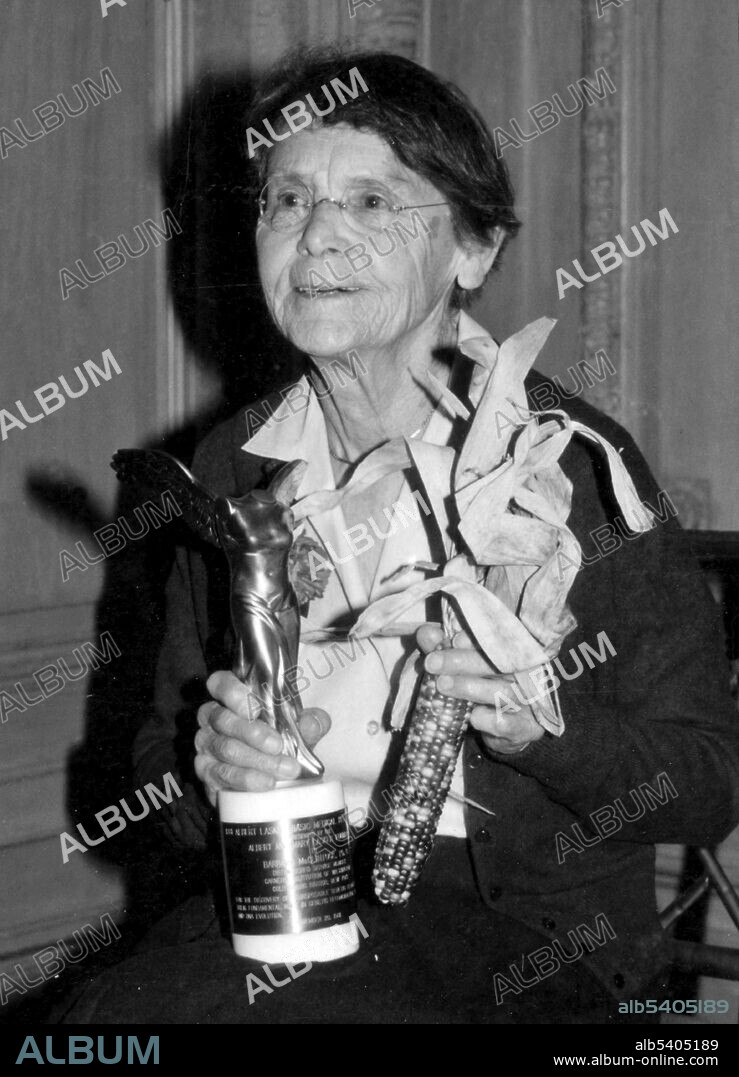alb5405189
Barbara McClintock, American Cytogeneticist

|
Añadir a otro lightbox |
|
Añadir a otro lightbox |



¿Ya tienes cuenta? Iniciar sesión
¿No tienes cuenta? Regístrate
Compra esta imagen.
Selecciona el uso:

Título:
Barbara McClintock, American Cytogeneticist
Descripción:
Ver traducción automática
Barbara McClintock holding Lasker Award and an ear of corn. McClintock (1902-1992) was one of the world's most distinguished cytogeneticists. She did groundbreaking research on the phenomenon of how genes in chromosomes could "jump" during the breeding of maize plants. She also showed how certain genes were responsible for turning on or off physical characteristics, such as the color of leaves or individual corn kernels. She developed theories to explain the suppression or expression of genetic information from one generation of maize plants to the next that defied the common wisdom of molecular biology prevalent during the 1950s. In the early 1960s, she traveled extensively, collected maize samples that demonstrated interesting evolutionary characteristics. She and her colleagues spent two decades assembling data on differences in South American maize, which were published in 1981 as "The Chromosomal Constitution of Races of Maize". In 1983, at the age of 81, she received the Nobel Prize in Physiology or Medicine for her work on mobile genetic elements, the first woman to receive an unshared Nobel Prize in that category. Photographed by Bernard Gotfryd, 1981.
Crédito:
Album / Science Source / LIBRARY OF CONGRESS
Autorizaciones:
Modelo: No - Propiedad: No
¿Preguntas relacionadas con los derechos?
¿Preguntas relacionadas con los derechos?
Tamaño imagen:
3551 x 4921 px | 50.0 MB
Tamaño impresión:
30.1 x 41.7 cm | 11.8 x 16.4 in (300 dpi)
Palabras clave:
1981 • AMERICA • ANCIANO • AÑOS 70 • BIOLOGIA • BIOLÓGICA • BLANCO Y NEGRO • BLANCO • CIENCIA • CROMOSOMA • DESCUBRIDOR • ÉLÉMENTS • ESTADOS UNIDOS DE AMERICA • EXPLORADOR • GENETICA • GENETISTA • HISTORIA • INVESTIGACION • LAUREADO • MAIZ • MONOCHROME • MONOCROMO • MUJER • MUJERES • NEGRO • PERSONA • PREMIO NOBEL • S. XX • SALA • SALTANDO • SALTAR • SIGLO XX • SIGLO • UNO
 Pinterest
Pinterest Twitter
Twitter Facebook
Facebook Copiar enlace
Copiar enlace Email
Email
